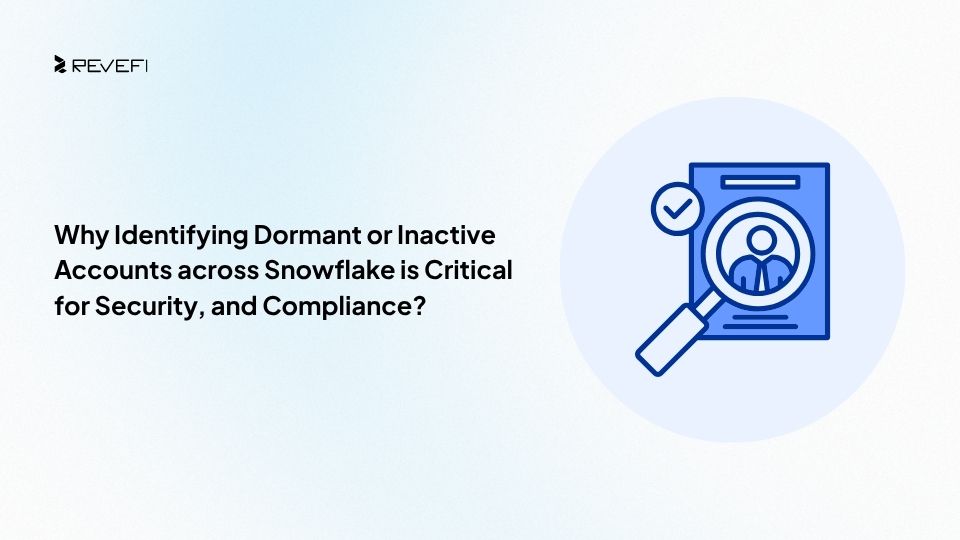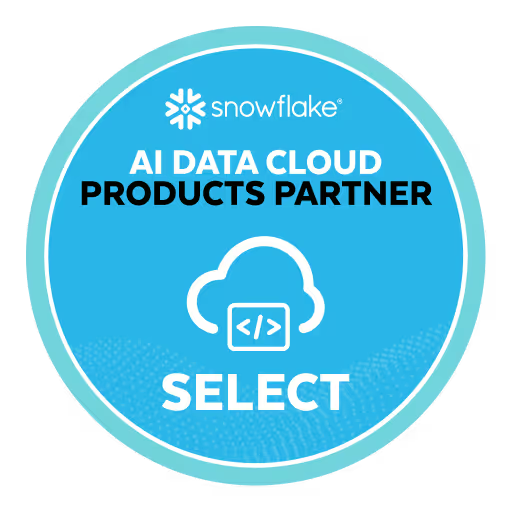The Security Risks of Dormant Accounts in Snowflake
Across industries, dormant accounts are more than just administrative oversights as they are high-risk entry points that lead to data breaches, compliance failures, and reputational harm. Whether caused by external attackers exploiting weak credentials or insiders abusing lingering access, the consequences are costly and avoidable.
These unused accounts expand the attack surface, giving cybercriminals additional entry points that often fall outside routine monitoring. Once compromised, a dormant account can provide undetected access to sensitive data for extended periods.
A major concern is credential compromise. Dormant Snowflake accounts often rely on outdated or weak passwords and may not be secured with multi-factor authentication (MFA).
The risk extends beyond external attackers. Insider threats become a serious issue when former employees or contractors retain access because their accounts were never deactivated. Even worse, some inactive accounts may still carry elevated roles such as SECURITYADMIN or SYSADMIN. If hijacked, these accounts allow attackers to escalate privileges, alter governance policies, and extract critical business data.
Threat actors take advantage of these gaps through brute-force attempts, phishing campaigns, or credential-stuffing attacks.
Dormant accounts also introduce compliance risks. Frameworks like GDPR, HIPAA, PCI DSS, SOC 2, and ISO 27001 require strong identity governance and timely removal of inactive users. Overlooking these accounts can result in audit failures, fines, or reputational damage.
This lack of visibility makes dormant accounts one of the most overlooked yet dangerous Snowflake security vulnerabilities.
Proactive monitoring, regular audits, and timely deactivation of dormant accounts are essential steps to reduce the Snowflake security risks and protect sensitive enterprise data.
Benefits of Identifying Inactive and Dormant Accounts in Snowflake
Proactively identifying and managing dormant accounts in Snowflake delivers both security protection and business value.
Beyond just reducing vulnerabilities, it improves compliance, operational efficiency, and cost management, making it a vital practice for modern data-driven organizations.
Key benefits include:
- Reduced Attack Surface
- Audit and Compliance Readiness
- Operational Efficiency
- Customer Trust and Confidence
- Cost Optimization
In summary, effective Snowflake dormant, and inactive account management not only minimizes security risks but also supports compliance, cost savings, and stakeholder trust.
How Revefi’s AI Agent Identifies Dormant and Inactive Accounts in Snowflake
Unlike manual reviews or static reports, Revefi’s AI Agent continuously monitors Snowflake environments to detect accounts that show little to no recent activity.
It does this by analyzing multiple data sources, including login history, query execution patterns, session activity, and role usage. Accounts that fall outside defined thresholds (such as no login attempts within the past 30, 60, or 90 days) are automatically flagged.
The AI Agent also distinguishes between human users, service accounts, and temporary test accounts to ensure context-aware monitoring.
Beyond activity tracking, Revefi’s AI Agent evaluates the risk profile of each account. For example, if an inactive account still holds privileged roles like SYSADMIN or SECURITYADMIN, it is prioritized for immediate review. Similarly, accounts without multi-factor authentication (MFA) or those showing anomalies such as logins from unusual geographies are escalated as high-risk.
By automating dormant account detection, Revefi eliminates the blind spots that traditional monitoring often misses. The result: reduced attack surface, stronger compliance readiness, and proactive protection of sensitive Snowflake data.
Conclusion
Dormant and inactive accounts in Snowflake may appear harmless, but in reality, they are hidden security liabilities. They expand the attack surface, complicate compliance, and create entry points for both malicious insiders and external attackers.
As data continues to grow exponentially, solutions like Revefi’s AI agent are essential for navigating complexities without sacrificing speed or cost. By providing real-time monitoring, alerting, and remediation, Revefi's AI agent eliminates delays, empowering data teams to focus on what matters: driving business growth.
The shift to AI-powered DataOps isn't just an upgrade, as it's a necessity for thriving in an increasingly data-centric world.
With tools like these, the future of data warehouses looks efficient, resilient, and innovative.











